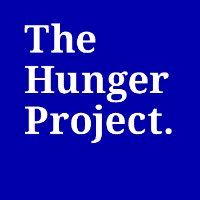Hunger
Of the nearly 783 million people suffering from chronic hunger globally, 99% live in low and middle-income countries. Unlike famines that receive emergency-aid, chronic hunger is a silent, invisible, day-after-day condition.
Hunger, poverty and food prices are inextricably linked. Not every person living in poverty is hungry, but almost all hungry people are living in poverty. Millions live with hunger and malnourishment because they simply cannot afford to buy enough food, cannot afford nutritious foods or cannot afford the farming supplies they need to grow enough good food of their own. Hunger can be viewed as a dimension of extreme poverty. It is often called the most severe and critical manifestation of poverty.
The only way for people to move beyond chronic hunger and their vulnerability to ever-rising food prices is to employ sustainable methods based on self-reliance. We partner with empowered rural communities to strengthen their self-reliance, specifically in Africa, South Asia and Latin America, where the highest concentrations of hungry people live.
Among other methods, we offer the tools and training to increase farm production at the local level; support our partners as they create, stock and manage their own food banks; and encourage clusters of rural villages to develop sustainable, self-reliant, hunger-free communities.
WHAT WE DO
- Enable communities to create, stock and manage their own food banks. In Africa, our epicenter food banks provide storage for excess harvest and ensure the food security of our partners during off-seasons.
- Develop income-generating activities. We implement income-generating activities: from sewing projects in Mexico to cow-fattening projects in Bangladesh. This enables the women and men of these communities to increase their incomes, so that they can purchase the food they need.
- Promote sustainable farming practices. Local agricultural experts teach our partners how to create and manage community farms. Villagers learn techniques to sustainably improve crop yields, providing entire communities with increased access to food.
- Ensure access to microfinance. Our Microfinance Program trains and prepare villagers, with a special focus on women food farmers, who grow the vast majority of the household food in sub-Saharan Africa. Partners learn how to increase their incomes and use their savings to improve the health, education and nutrition of their families
Related News
Make change happen. Invest in people.
Mailing address
The Hunger Project
110 West 30th Street, 6th Floor
New York, NY 10001
Get connected
Join the conversation on social, and stay connected with the latest from our partners around the world.
Stay informed
Subscribe to our newsletter to receive updates of latest news and events.
© The Hunger Project | Website by The Good Alliance






